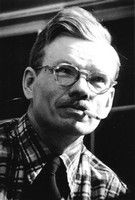Kenneth Stubbs |
 |
|
Stubbs' Modernist Path On Display at Art AssociationHe seemed an unlikely modern artist--a boy from a small southern town--but once Kenneth Stubbs got started and found his path through cubism he never wavered. The Provincetown Art Association and Museum is holding a show of his modernist paintings and traditional watercolors beginning with a reception from 7 to 9 p.m. Friday and running to Nov. 27. Stubbs (1907-1967) spent most of his adult life in Washington, D.C., and summered in Provincetown where he met and studied with E. Ambrose Webster beginning in 1931. When he was coming of age in terms of his art, the battle between modernism and traditionalism was raging and would continue to do so for decades. Cubism led the way in the modernist expression, and Stubbs found freedom in that refusal to depict an item from one single point of view. In cubism, the subject, the thing or person or landscape, is largely deconstructed into its parts as viewed from many perspectives and you see them all at the same time. Stubbs was a very accomplished traditional painter and watercolorist, but he found this new way of looking at the world to his liking. It merged with his love of mathematics and of the Japanese game GO which is deceptively simple lookiing yet quite complex to master. He was able to use cubism to venture to the edges of complete abstraction or, if he chose, to paint in a much more realistic manner and let sections of cubism add motion, fluidity and dynamics to a canvas. He never tired of the method, and when many American modernists made the shift to abstract expressionism he did not follow. His subjects rainged from landscape and the obvious choices of still life or live model to basketball players in a swirl of motion or dancers broken into pieces that nonetheless keep the beat perfectly. It is wonderful to look at his work over the decades, to see how he used the elements of cubism to constantly reveal new aspects of common sights like children on a swing set. His show is accompanied by a catalog with two lengthy essays and a charming interview with his widow Miriam Stubbs, who still summers at their Bradford Street home in Provincetown, conducted by his grandaughter Kendra DeColo. Their Q&A lets Miriam talk about Kenneth's work. It also points out that though Kenneth died 20 years before Kendra was born she still feels the power of his path in life and feels her own connection to him through his work. In addition to talking about his paintings, his wife gives some wonderful personal insights, like the fact that he painted billboards to support his art for a while despite having a fear of heights. He was able to get back on solid ground and went on to teach art at the Corcoran School of Art in Washington for many years. And although she claims no favorite among the works in the show, she does have a particularly sweet feeling for "The Dancers." When they first met he found out she liked to dance and he got his sister to go with him to Arthur Murray so he could learn to dance. That painting, she tells Kendra, is a direct representation of those classes. In their interview Miriam also makes clear the difference between the paintings and watercolors. The casein and oils are analytical, she says, but "the watercolors are pure poetry." The show spans 30 years of work and gives a solid introduction to the work of a man who, despite 15 solo shows, has not garnered the level of recognition he has long deserved. Sue Harrison, Provincetown Banner, October 6, 2011, pages 25 & 31
|
See also: Show Announcement Catalog Cape Cod Times Review Art Knowlege News Announcement Works Shown Installation Photos |